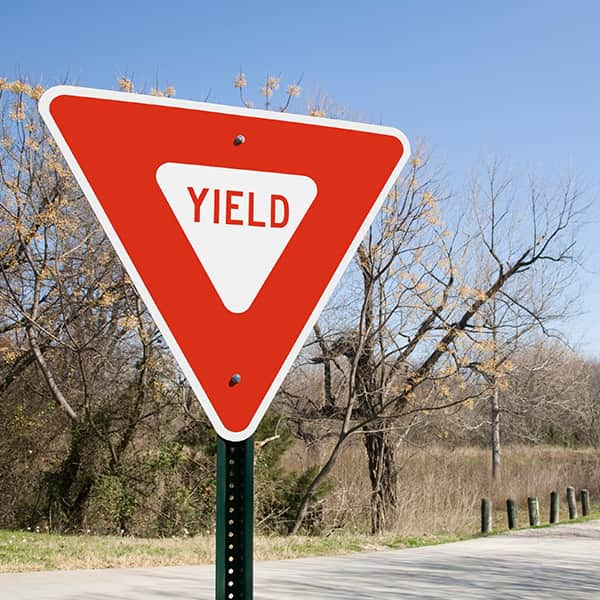
The concept of "right of way" is especially important for young drivers with only a little experience on the road. Many traffic laws only state that the right of way must be yielded, but provide few instructions beyond this. In the most general sense, right of way means who has the legal right to go first on the road.
If you or another driver fails to yield the right of way, you risk colliding with each other, cyclists, or pedestrians. Here are some tips for understanding who has the right of way in several common driving circumstances.
Controlled Intersections
A controlled intersection is an intersection that has either stop signs or a traffic light. These are the simplest situations to determine right of way because you can use the signs and lights as your guide. If you and another vehicle arrive at a stop sign at the same time, yield to the car to your right side.
Uncontrolled Intersections
Uncontrolled intersections are trickier because there are no yield signs, stop signs, or traffic lights to guide you. As a general rule, you should yield to cars that are already at the intersection. Whoever arrives at the intersection first gets to go first. And similar to stop sign etiquette, you should yield to the car on your right when in doubt.
T Intersections
A T Intersection is an intersection that occurs when a road dead ends into a through street. If you are driving on the dead end road, you must yield to traffic that is going past from the left and right.
Multiple Lane Intersections
Sometimes a one or two-lane road intersects a much larger road or highway. In this circumstance, drivers on the smaller road should yield to vehicles on the larger road. Larger roads often have greater speed limits than smaller roads, so all drivers should be aware of this common fact as well.
Highway On/Off Ramps
Getting onto and off of highway exit ramps can be tricky, especially if there are many lanes or a lot of traffic. Drivers on an access ramp must yield to vehicles traveling on the exit ramp. Sometimes traffic leaving an interstate merges into its own separate lane. Drivers on the access ramp should still yield in this case. However, vehicles that are getting onto a highway must yield to all traffic coming up behind them.
Yield to Other Drivers in These Circumstances
- At a yield sign
- To pedestrians in a crosswalk
- To persons using a seeing eye guide dog
- To persons using a white cane with or without a red tip
- At uncontrolled intersections where vehicles are already in the intersection
- At "T" intersections where you must yield to vehicles on the through road
- When turning left in which case you must yield to oncoming pedestrians, cars, etc.
- When driving on an unpaved road that intersections with a paved road
- When returning to the roadway after the car is parked

